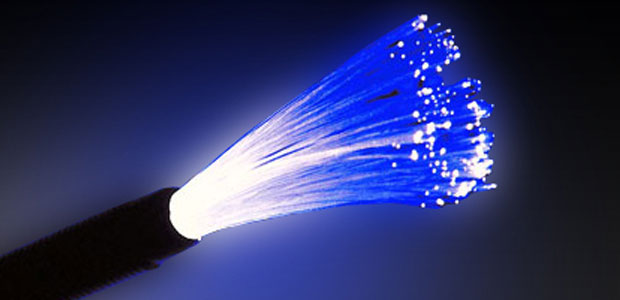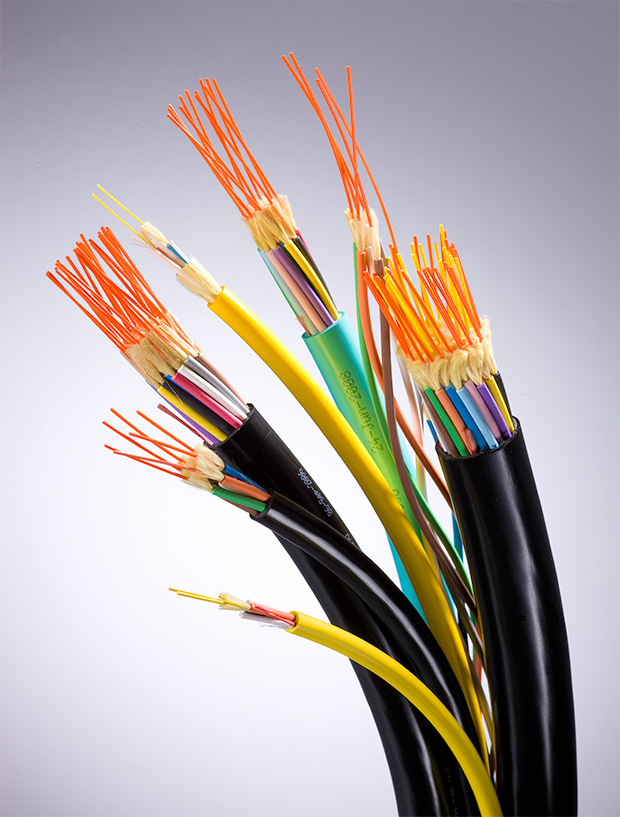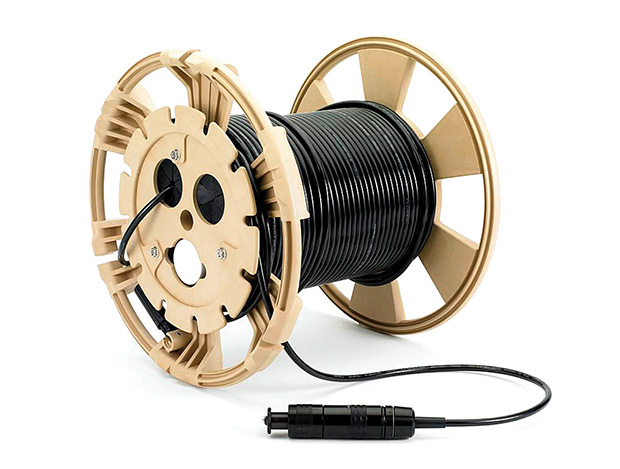
Deployable Fiber Optic
Deployable Fiber Optic Systems Boost Reliability And Performance
Rick Hobbs
ROANOKE, VA.–As the use of fiber optics has increased in the oil and gas industry to enhance production through better data reliability, availability and performance than traditional copper communication systems, so have the number of “deployable” systems used in remote locations. These applications range from offshore and land-based rig automation to real-time sensors for pipeline monitoring to systems for geo-exploration, wireless communications, security infrastructure, smart well controls, and operations control centers.
In the field, deployable systems are increasingly important to ensure satellite uplink networks and communication architectures; distributed control systems and programmable logic control; automation and control; supervisory control and data acquisition for wellhead automation, and pipeline control and monitoring; and local area network and wide area network communication infrastructure for shore-to-platform and interplatform connections; as well as for closed-circuit television for physical security.
In contrast to fixed installations, deployable systems are designed to be installed quickly, retracted, and then relocated in some of the most inhospitable environments on earth. As oil and gas exploration, drilling and production continue to get move into more remote as well as colder, hotter or deeper environments, deployable systems will become even more vital to the industry.
Given the environments in which they reside, oil- and gas-grade fiber optic systems typically are commercialized versions of field-tested, proven military-grade products. As such, their component parts are designed to withstand everything from dust and debris to chemical exposure, temperature extremes, ultraviolet light, radiation, electrical power transients, interference, fire, moisture, humidity, water, crush, tension, flexing, impact, and vibration.
When designing a deployable fiber optic system, one needs to look at in its entirety. Unlike fixed applications, a deployable system is designed from beginning to end (plug and play), and is delivered to the user as a complete solution.
The primary elements of a deployable system include hardened cable jacketing, “genderless” connectors for quick deployment without regard for male or female ends, hybrid systems that include copper along with fiber to deliver data communications and power, and reel systems that speed deployment and retraction while protecting the fiber when not in use or during transit.
Hardened Cabling
For purposes of deployment, tight-bound, tight-buffered distribution style cabling typically is recommended. This style of cabling is ideal because of its small diameter and lightweight construction.
BREAKOUT CABLE
Many oil and gas companies are converting to fiber optics as component costs continue to drop, making fiber a better solution than copper in most applications.
Distribution-style cables have a tight-bound outer jacket, which is pressure extruded directly over the cable’s core. This combination of a helically stranded core and a pressure-extruded outer jacket provides an overall cable construction that offers better crush and impact protection, and increased tensile strength. This also reduces outer jacket buckling during deployment.
Escalating degrees of cable protection are available as needed to meet the specific needs of an application.
Various jacket materials are available, including PVC or polyurethanes, which are tailored specifically to meet the mechanical and environmental needs of the application. Options within each jacket material include coefficient of friction, cold temperature flexibility, and temperature range, to name a few.
Water tolerant options are available that take advantage of the qualities of tight buffered cable and superabsorbent polymer aramid yarn.
Fiberglass or metal-braided jackets not only provide excellent abrasion resistance, but also deliver increased rodent protection. Custom rodent-resistant cables are available that include metal or dielectric armor or additives to the outer jacket. In deployable applications, exposed cable is often an intriguing temptation for animals, which can, and often do, chew on it.
Cables And Connectors
For applications that can benefit from fiber optics and copper, hybrid connector cables offer both within the same cabling sheath.
A distinct advantage of hybrid cable-connector solutions is that the customer can bundle the high performance of fiber with the copper power or control signals in one cable. This reduces the number of cables that must be designed, purchased and deployed in a system.
Hybrid cable connectors also offer distinct savings in labor and cable structure costs.
“Genderless” connectors have both male and female elements, and perhaps are more appropriately described as dual-gender, and often are called hermaphroditic. They are designed for quick deployment and allow the user to unreel fiber cable without regard for male or female ends.
The genderless connector design has been simplified further with user-friendly mating interfaces capable of “blind mate” and/or applications that require thousands of mating cycles. In addition, these connector systems are designed to resist extreme harsh mechanical and environmental conditions, including high vibration, mechanical and thermal shock, and fluid immersion.
Another benefit of genderless connectors is that multiple, identical cable assemblies can be daisy-chained (sequenced) together to extend the distance of a deployable system while maintaining polarity. Polarity can be an issue when connecting an odd number of traditional male to female gender connectors.
In such cases, an additional connector is required to correct polarity. However, such connectors are known for high loss and add components for the customer. Therefore, genderless connectors are uniquely advantaged over traditional interconnection systems.
Distances of several kilometers are possible, limited only by system link budget.
This type of genderless connector provides extreme flexibility in the case of redeployment, where the length of the cable assemblies required for the next application are not fixed, or even known.
Reel Systems
The key characteristics of a reel system in deployable fiber optic applications are that they are lightweight, rugged, and stackable for storage and transit.
MARS REEL
Unlike fixed applications, deployable fiber optic systems are designed from beginning to end (plug and play), and are delivered to the customer as complete solutions.
To meet these requirements, lightweight alternatives to traditional metal reels are being developed. Constructed of durable, yet lightweight, impact-absorbing polymers, these modular, advanced reel systems are designed specifically for the demanding needs of harsh oil- and gas-environment fiber optic installations.
Reels can be used with a simple deployable axle, or with a flange supported deployment and acquisition system. These types of systems include A-frames, cable acquisition cradles, transit case systems, tripods, bumper mounts, backpacks, backpacks with fiber optic slip rings, and cartridge systems.
Cartridge systems are a specially designed protective case for deployable cable reels that permits full deployment and retrieval of cable without removing the reel from the case. The cartridge system, which comes with casters, is an ideal choice in many applications. Using a cartridge system, a single person can handle multiple spools at once, and can deploy fiber quickly and rewind on the reel without assistance.
To simplify shipping and transit, cartridge systems, transit cases and reels are designed with interlocking stacking features.
Reel systems also provide a measure of protection for unspooled fiber optic cabling, or when the cabling is retracted.
In harsh oil and gas environments, when fiber optic assemblies can be placed in a controlled-environment storage system such as a reel, possibly together with a cartridge, any potential damage to the cable or the connectors is minimized. This reduces the need to refurbish components regularly, because the system is better protected during deployment.
Access And Communication
Although deployable fiber optic systems are largely “wired,” hybrid cabling (the combination of fiber optic and copper/electrical within the same cable sheath) also allows wireless access points to be installed anywhere. This is ideal when access points are changing constantly.
Unlike traditional wireless networking devices that require 110-volt AC power for each device, power can be supplied to a hybrid system in the same cable that also carries voice and data. As a result, any 802.11-certified devices are able to communicate through the network, including personal devices such as personal digital assistants, laptops, voice over Internet protocol devices, and cell phones.
This provides personnel with the means to communicate with each other and even make calls outside the system. In addition, sensor-based data such as temperature, humidity, airflow and gas can be collected and delivered wirelessly for use by the entire network.
Many oil and gas companies are converting to fiber optics as the costs for components continue to drop, making fiber a better solution than copper in most applications. Even die-hard copper devotees are moving to fiber, and when they do, they rarely look back. When oil and gas system engineers realize the bandwidth opportunities, they usually expand their capabilities and identify creative new ways to enhance the solutions for their applications.

Rick Hobbs serves as director of business development–military, specialty and harsh environment, and as general manager of AIS products for Optical Cable Corporation. He has more than 19 years of experience in networking and system solutions, including business development, product management, technical sales and operations management. Hobbs operates out of OCC’s Plano, Tx., facility.
For other great articles about exploration, drilling, completions and production, subscribe to The American Oil & Gas Reporter and bookmark www.aogr.com.















